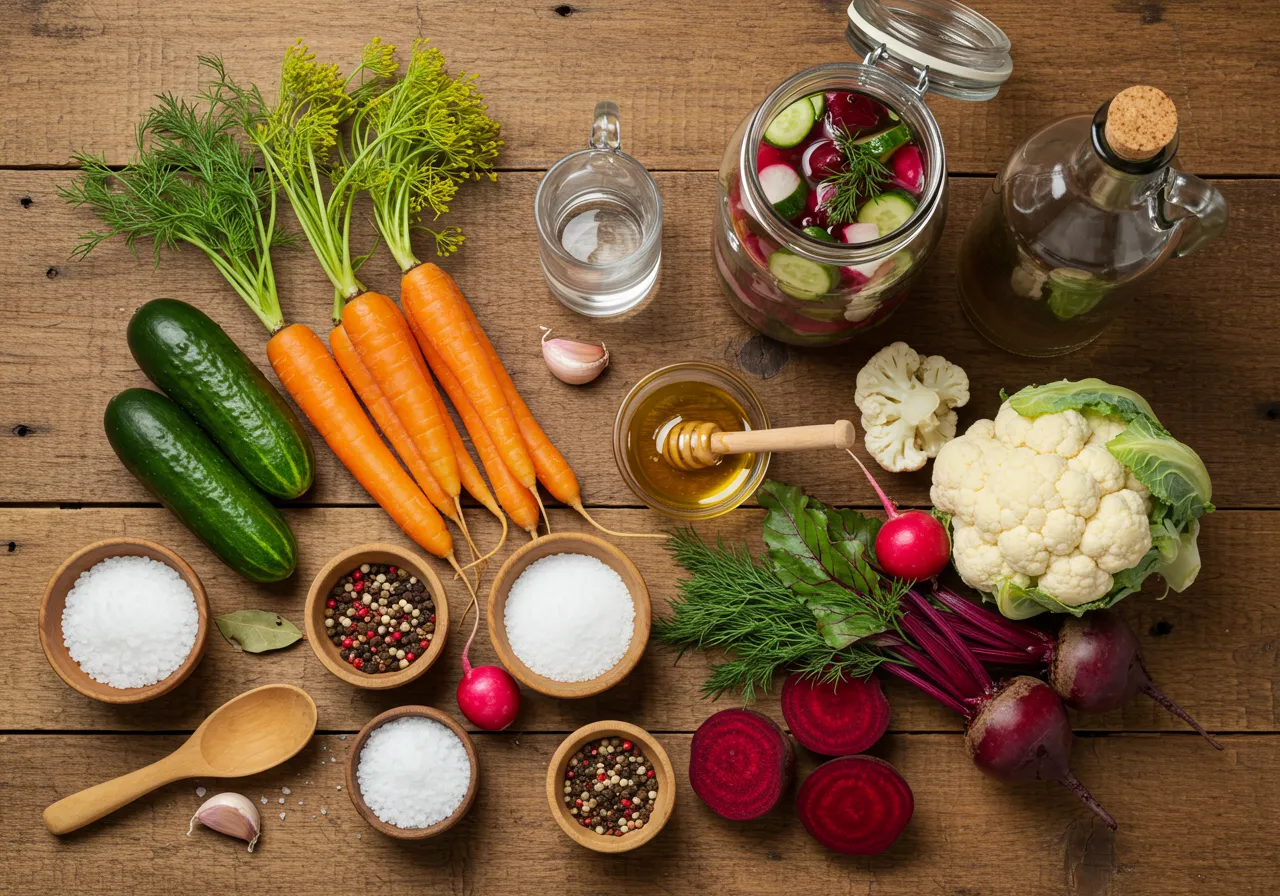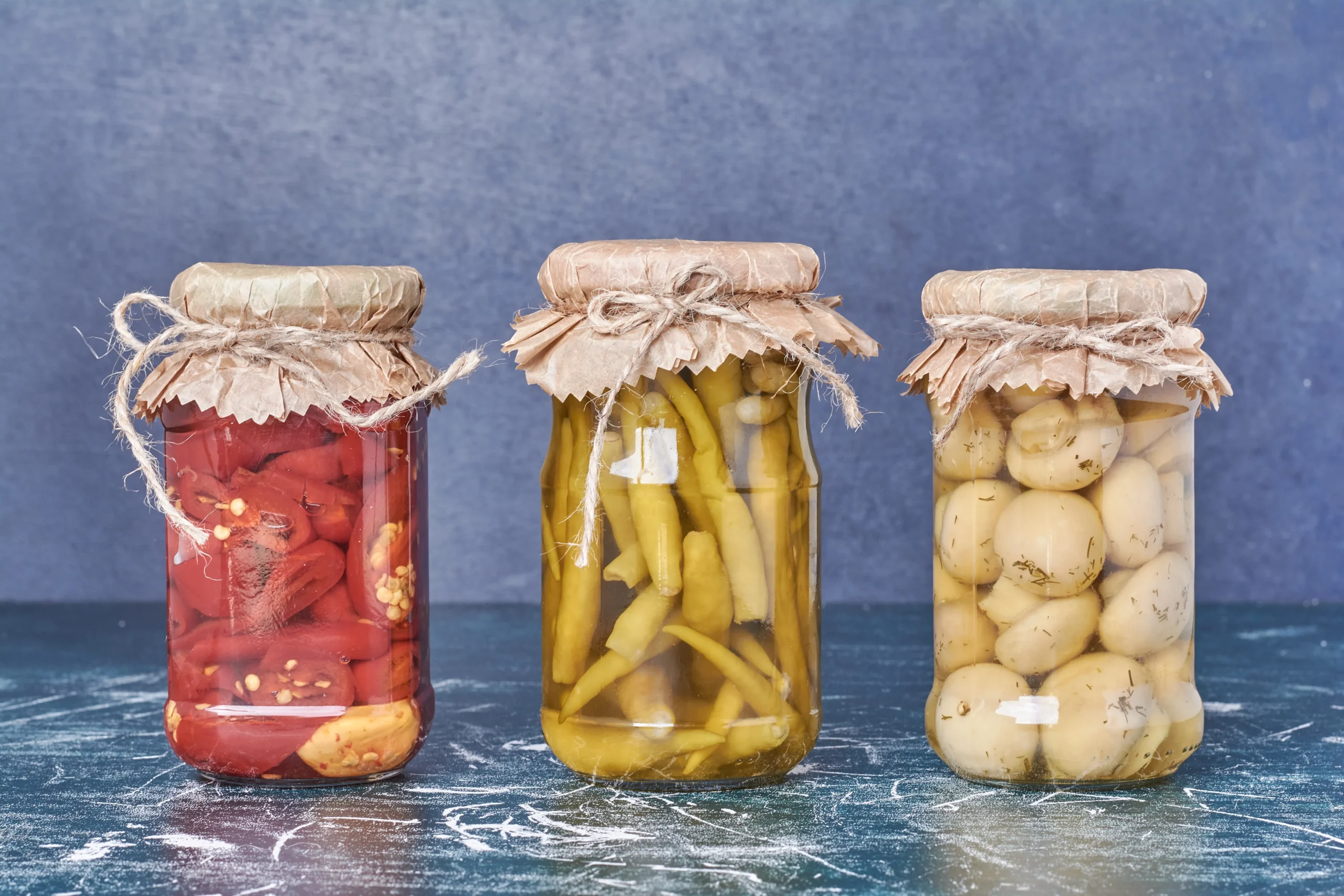Pickles hold a special place in culinary traditions worldwide due to their tangy flavor, crunch, and versatility. They enhance various dishes, from a dill pickle on a burger to sweet pickles in a potato salad. But do you know what pickles are made of? This article explores the ingredients, methods, and variations that define this timeless culinary delight.
What is Pickle Made Of: The Basics
A pickle consists of any food item preserved in brine or vinegar. Most people associate pickles with cucumbers, but almost any vegetable or fruit can undergo pickling. The preservation process involves immersing the food in a mixture of salt, water, and optional spices, which creates a tangy and sometimes sour flavor.
Historically, humans used pickling to preserve food for extended periods, especially before refrigeration existed. Ancient civilizations like Mesopotamia and Egypt relied on this technique to store vegetables for harsh seasons. Today, people value pickles not only for their shelf life but also for their ability to enhance flavors. For instance, adding pickled ingredients to chicken salads creates a tangy, delightful balance.
Ingredients of Pickles: What Makes a Perfect Pickle?
The art of pickling begins with choosing the right ingredients. While cucumbers are the most popular choice, you can pickle vegetables like carrots, radishes, cauliflower, and beets. Moreover, fruits such as cherries, watermelon rind, and strawberries bring a sweet twist to the pickling world.
To create pickles, you need:
- Fresh cucumbers or other vegetables
- Brine made from salt and water
- Vinegar for acidity and preservation
- Spices such as dill, mustard seed, or peppercorns
- Optional sweeteners like sugar or honey for sweet pickles

Selecting spices thoughtfully can transform your pickles. Dill, for instance, is essential for creating classic dill pickles, while turmeric and sugar give bread and butter pickles their distinct sweetness and golden hue. Additionally, don’t hesitate to experiment with combinations like garlic and chili flakes for spicier flavors or mustard seeds and celery seeds for a bold, earthy profile. Pickles also play a pivotal role in creamy classics like Hellmann’s potato salad, enhancing their tang and crunch.
How Are Pickles Made? Exploring Methods and Tips
Fermentation: The Traditional Way to Make Pickles
Fermentation remains the traditional way to make pickles, relying on a natural chemical process. When you submerge vegetables in a lacto-fermentation brine of water and salt, beneficial bacteria convert their sugars into lactic acid. This process not only gives fermented pickles their tangy flavor but also acts as a preservative.
To achieve success in fermentation:
- Choose non-iodized salt to maintain the fermentation process.
- Ensure vegetables stay submerged in the brine to avoid contamination.
- Keep jars in a cool, dark place and check them daily for progress.
Fermentation takes time, often several weeks, but the results are worth it. Fermented pickles develop deeper, more complex flavors while providing probiotics that promote gut health.
Quick Pickling: How to Make Pickles Faster
For those with less time, quick pickling offers a faster alternative. This method involves heating vinegar with water, sugar, and spices, then pouring the hot brine over vegetables. The pickles are ready to eat in just a few hours and can last for weeks in the refrigerator.
While quick pickling skips the fermentation step, it delivers bright, fresh flavors that work perfectly in salads. For example, quick pickles complement the tangy taste of a Greek salad beautifully.
Types of Pickles: Which One Is Right for You?
Pickles come in numerous varieties, each offering unique flavors and uses. Understanding these types will help you choose the perfect one for your dish.
- Dill Pickles: The classic pickle, flavored with fresh dill, works well in burgers and sandwiches.
- Bread and Butter Pickles: These sweet and tangy pickles, often served as a side, contain sugar and turmeric.
- Kosher Pickles: Brined with garlic and dill, kosher pickles offer bold flavors that originated in Jewish delis.
- Sweet Pickles: Candied and versatile, sweet pickles are excellent for relishes or salads.
- Sour Pickles: Fermented in a salt brine without vinegar, sour pickles derive their tang from lactic acid.
For adventurous options, try pickling fruits or herbs. For example, pickled watermelon rind adds a sweet crunch to meals, offering a creative alternative to traditional vegetables.
Are Pickles Healthy? Benefits of Eating Pickles
Pickles are not only delicious but also nutritious. When enjoyed in moderation, they provide various health advantages.
- Low in Calories: Pickles are a great choice for weight-conscious individuals.
- Rich in Nutrients: Pickling retains the vitamins and minerals of the original vegetables.
- Probiotic Boost: Fermented pickles add beneficial bacteria to your gut microbiome, promoting digestive health.
However, be mindful of the sodium content in store-bought pickles. If you’re watching your salt intake, making pickles at home allows you to control the ingredients and reduce sodium levels.
How to Use Pickles in Everyday Meals
Pickles are incredibly versatile and can transform many dishes. Here are a few creative ways to add them to your dishes.:
- Add dill pickle slices to your burgers or sandwiches for a tangy crunch.
- Dice sweet pickles into potato or tuna salad to enhance their flavor.
- Pair sour pickles with rich foods like barbecue or fried chicken to balance their heaviness.
- Use pickle brine as a marinade for chicken or pork to tenderize and flavor the meat.
Pickles even find their way into desserts and cocktails. Pickled fruits like cherries or strawberries make excellent toppings for ice cream, while pickle juice adds a unique twist to Bloody Marys and other beverages.
Conclusion
Pickles are far more than preserved cucumbers; they represent a culinary tradition steeped in history and flavor. With countless variations, pickles bring crunch, zest, and a touch of acidity to dishes. Whether you enjoy classic dill pickles or sweet bread and butter pickles, there’s a type to suit every palate.
If you’re ready to explore the world of tangy delights, try incorporating complementary sauces like the bold umami sauce into your cooking. By mastering the basics of pickling, experimenting with flavors, and using these creative tips, you’ll elevate your culinary skills and enjoy the timeless magic of pickles in your meals.
FAQs
1. What vegetables can be pickled besides cucumbers?
Absolutely! While cucumbers are the classic choice, you can pickle carrots, cauliflower, beets, radishes, green beans, onions, and even garlic. Many home cooks also enjoy experimenting with pickled fruits like watermelon rind or cherries for a sweet and tangy twist.
2. What’s the difference between fermented pickles and vinegar pickles?
Fermented pickles are made through a natural process where beneficial bacteria produce lactic acid, preserving the vegetables and adding probiotics. Vinegar pickles (also called quick pickles) are preserved by acidic vinegar and are ready to eat much faster, but lack live cultures.
3. Is it safe to make pickles at home?
Yes, home pickling is safe when done correctly. Always use clean jars, keep vegetables fully submerged in brine, and follow time-tested recipes. If you’re fermenting, monitor for mold or off smells. Vinegar-based pickles are even easier and have fewer safety risks.
4. How long do homemade pickles last?
Quick pickles stored in the fridge can last up to 2 months. Fermented pickles, if stored in a cool and dark environment, can last 4–6 months or longer. Always use clean utensils to avoid contamination and check for any spoilage signs before eating.
5. Are pickles healthy to eat regularly?
Pickles are low in calories and can be a good source of probiotics (if fermented) and antioxidants. However, store-bought versions may be high in sodium or added sugars. Preparing them yourself gives you full control over what goes into the recipe, making it easier to create a healthier version.

